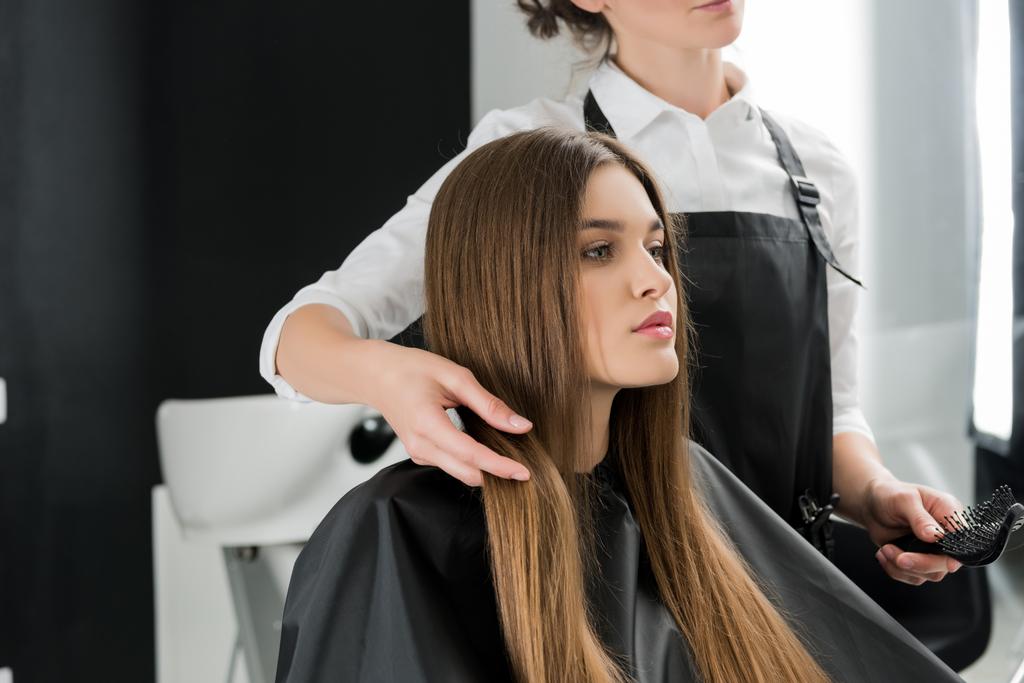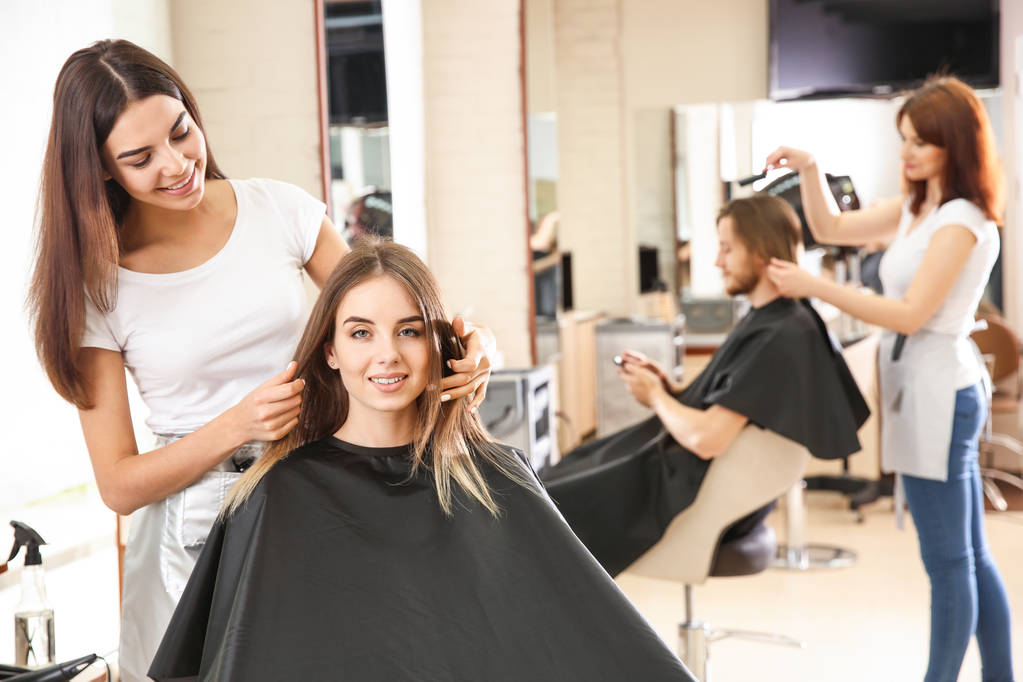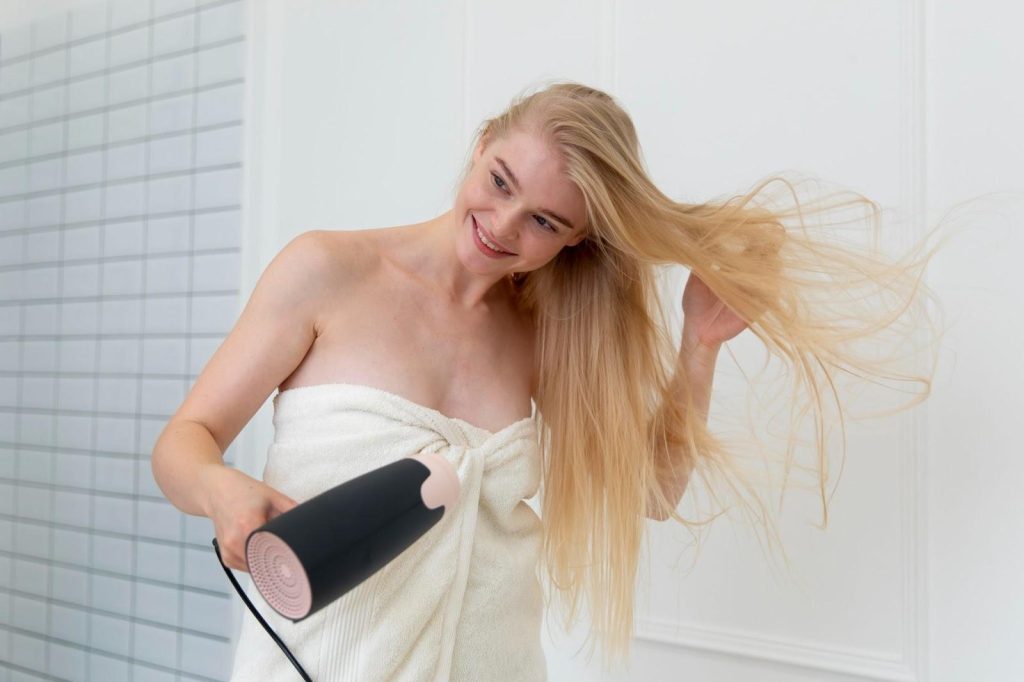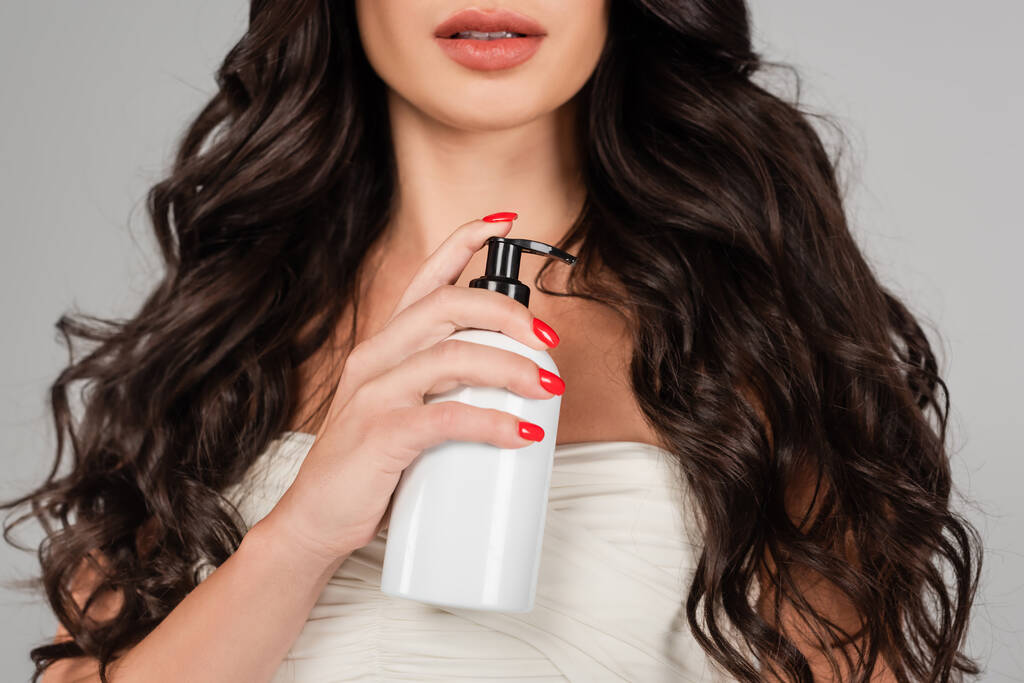Most effective strategies for boosting your hair’s volume and thickness. From diet and nutrition to styling techniques, hair care products, supplements, and even medical treatments, we’ll cover all the bases. My goal is to arm you with the knowledge and tools you need to achieve the head of reign hair extensions you’ve always dreamed of.
Have you ever paused to wonder exactly what we’re talking about when we mention “hair volume”? It basically means how thick, full, and dense it seems to the eye. When your hair is bursting with life and has that beautiful bounce, it’s a clear indicator that it’s healthy and less damaged. But when it feels thin and weak, it’s more difficult to get volume.

Kate R, a hair specialist, sheds light on this, explaining, “Your hair’s volume can be affected by many factors: stress, hormonal shifts, genetic predispositions, a less than ideal diet, environmental pollution, neglect in hair care, the misuse of hair products, and excessive styling can all contribute to reducing your hair’s natural volume.”
As somebody who has always strived for luscious, voluminous locks, I know firsthand the struggles of trying to achieve fuller and thicker hair. Whether your hair is naturally thin, or you’ve experienced some hair loss or thinning over the years, it can really take a toll on your self-confidence. But don’t despair! Through extensive research and personal trial-and-error, I’ve discovered a wealth of tips and tricks for fuller and thicker hair that I’m excited to share with you.
So let’s get started on this journey to fuller, thicker, more fabulous hair together!
Why Does Hair Thin or Fall Out?
Before we jump into the solutions, it’s important to understand some of the common reasons why hair might thin or fall out in the first place:
| Cause | Description |
|---|---|
| Aging | As we get older, our hair follicles naturally shrink and hair growth slows |
| Hormonal changes | Pregnancy, menopause, thyroid issues, etc. can all impact hair growth cycles |
| Nutritional deficiencies | Lack of key nutrients like protein, iron, zinc, and vitamins can lead to thinning |
| Stress | Extreme physical or emotional stress can shock hair follicles, causing temporary hair loss |
| Harsh treatments | Over-processing hair with color, bleach, perms, etc. can cause damage and breakage |
| Medical conditions | Certain autoimmune disorders, scalp infections, medications can trigger hair loss |

If you suspect an underlying medical issue is the culprit for your thinning hair, definitely consult with your doctor. But for most of us, making some simple changes can work wonders for improving thickness and volume. Let’s look at diet first.
Eating Your Way to Healthier Hair
One of the most foundational things you can do for fuller, thicker hair is to nourish your body with the right nutrients. Just like the rest of your body, your hair follicles need a steady supply of vitamins, minerals, and macronutrients to function optimally. Some of the most important nutrients for thick, healthy hair include:

- Protein: Hair is primarily made of a protein called keratin, so adequate protein intake is essential. Aim for a palm-sized portion of high-quality protein at each meal. Good sources include eggs, meat, fish, Greek yogurt, beans, and nuts.
- Iron: Iron deficiency is a very common cause of hair loss, especially in women. Iron-rich foods to incorporate include red meat, dark leafy greens, lentils, and pumpkin seeds. You may also want to have your iron levels checked and supplement if needed.
- Omega-3s: These healthy fats nourish the hair follicles and support the thickening and lengthening of hair. Eat plenty of salmon, sardines, walnuts, and flax seeds. I like to aim for 3 servings of omega-3 rich foods per week.
- B-vitamin: Biotin, niacin, and cobalamin deficiencies can all contribute to hair loss. Make sure to include eggs, almonds, sunflower seeds, avocados, and whole grains in your diet for B-vitamins. Many also take Biotin supplements for extra support.
- Vitamin C: This antioxidant is crucial for collagen production, which helps strengthen hair. Eat lots of citrus fruits, berries, bell peppers, and broccoli for a hair-healthy dose of C. I try to have at least 1-2 vitamin C rich foods daily.
It’s a good idea to limit inflammatory foods that can aggravate hair loss like sugar, refined carbs, trans fats, and processed meats. Focus on whole foods as much as possible. I find it helpful to think of my plate in terms of a rainbow – lots of colorful produce is key!
Mastering the Blow-Dry
A proper blow-drying technique can dramatically change your hair’s volume. A simple trick is to flip your hair upside down while drying. This lifts the roots from the scalp, giving you an instant boost in volume.

Back-Brushing
It’s important to differentiate between back-brushing and the more damaging backcombing. Back-brushing, done by gently sweeping the brush towards the scalp, can add a gentle lift to your hair without causing harm.
Instant Volume with Extensions and Toppers
For those looking for an immediate solution, clip-in hair extensions and human hair toppers are excellent choices. They can instantly add length and volume, and can be applied at home. These products are a great choice if you’re looking for a fast change and are perfect for daily wear.
Styling Secrets for Instant Volume
In addition to nourishing hair from the inside out, we can also fake extra volume and thickness with some simple styling techniques. Here are some of my go-to tricks:

| Tip | Why It Works |
|---|---|
| Ditch the flat iron | Flat irons compress the cuticle and make hair look thinner. Embrace your natural texture instead. |
| Blow dry upside down | Flipping your head upside down while blow drying lifts the roots for major volume. |
| Backcomb the roots | Gently backcombing or teasing hair at the crown creates the illusion of thickness. |
| Ask for textured layers | Layers remove bulky weight and allow hair to look fuller. Face-framing pieces are flattering. |
| Curl the ends | Using a large-barrel curling iron to add waves and texture to the lengths makes hair look thicker. |
| Try voluminizing products | Mousse, root lifters, dry shampoos can all boost hair’s volume. Apply to roots before styling. |
The important is to create as much lift and movement in the hair as possible. Flat, lifeless styles only make thin hair look more obvious. Don’t be afraid to play around with different techniques until you find what works best for your hair type and texture. The goal is effortless-looking volume!
Top Hair Care Products for Thickening
Using the right hair care products can go a long way in making hair look and feel thicker and fuller. Look for products that are specifically formulated for fine or thinning hair, they often contain ingredients that bulk up the hair shaft. Here are some of the best product types to try:

- Volumizing shampoo and conditioner: These are typically lighter-weight formulas that won’t weigh hair down. Many contain proteins, vitamins, and natural extracts to plump up strands. I’ve had good results with the OGX Thick & Full Biotin & Collagen shampoo and conditioner.
- Thickening treatments: Use a weekly deep conditioning mask or leave-in thickening treatment to strengthen and add body to hair. I’m a fan of the Olaplex Hair Perfector and Bumble & Bumble Thickening Treatment – both really transform hair over time.
- Scalp serums Look for scalp treatments with ingredients like peptides, caffeine, ginseng, and peppermint that stimulate the follicles and promote a thicker, healthier growth cycle. The Vegamour GRO Hair Serum is one of my absolute favorites.
- Texturizing and volumizing stylers Opt for lightweight mousses, sprays, and dry texture sprays that you can work into the roots and lengths to add instant fullness. I love the Kristin Ess Dry Finish Working Texture Spray for messy, undone volume.
- Tinted powders or fibers To camouflage any visible scalp or widened parts, try a product like Toppik Hair Building Fibers or Color Wow Root Cover Up. They cling to the hair and scalp to create the look of thicker, more voluminous hair in seconds.
When shopping for any hair products, some key ingredients to look for include biotin, collagen, keratin, rice, and soy proteins, vitamin B5, and niacinamide – all of which help to strengthen and bulk up fine, thin hair. Just be sure to avoid anything containing sulfates, parabens, or heavy silicones and oils that can weigh hair down.
Boost for Healthy Hair Growth
While a nutrient-rich diet should always be the foundation, sometimes we need a little extra help to support thicker, fuller hair growth from the inside out. This is where supplements come in. Here are some of the most research-backed options to consider adding to your routine:

- Biotin: This B vitamin helps the body metabolize fats and proteins to promote healthier hair, skin, and nails. I recommend 2,500-5,000 mcg per day for hair benefits. The Sports Research Biotin supplement is a great option.
- Collagen: As a key building block of hair, collagen supplements (especially marine collagen) have been shown to increase hair thickness and growth. Aim for at least 5 grams daily. Vital Proteins makes a nice tasteless collagen powder to add to smoothies or coffee.
- Viviscal: This popular hair growth supplement containsAminoMar marine complex, horsetail extract, vitamin C, and biotin to nourish thinning hair and promote thicker, fuller growth. Take two tablets per day for at least 3-6 months for best results.
- Nutrafol: Another clinically backed hair supplement, Nutrafol is formulated with medical-grade botanicals like ashwagandha, saw palmetto, and curcumin to rebalance hair-thinning hormones and combat follicle damage. The Men’s and Women’s formulas are great options.
- Omega-3s: If you don’t regularly eat fatty fish, taking an omega-3 supplement can help provide the essential fatty acids needed for optimal hair health. Look for one with at least 1000 mg combined EPA/DHA. The Nordic Naturals is my go-to brand.
Some supplements can interfere with other health issues. Better to play it safe and get your doctor’s okay first!
Home Remedies & Natural Treatments Experiment
Using hair products and taking supplements natural treatments experiment, you can also try some simple at-home remedies to help boost hair thickness and volume naturally. Many of these treatments use common pantry ingredients and can be done on a regular basis for cumulative benefits. Some to try:
- Scalp massag: Massaging the scalp for 5 minutes per day stimulates blood flow to the hair follicles, which brings more nutrients and oxygen to support thicker hair growth. You can use your fingertips or a Sclp massager in circular motions.
- Green tea rinse: The catechins and caffeine in green tea may inhibit DHT, the hormone linked to hair loss. Steep 2-3 tea bags in hot water, let cool, and use as a final rinse after shampooing a few times per week. Bonus – it’s also great for soothing an itchy, irritated scalp!
- Onion juice: Rich in sulfur, onion juice has been shown to boost circulation and decrease inflammation to support healthier, thicker hair growth. Blend a small onion and strain out the juice. Apply to scalp for 15 min before washing. Do this 2x/week for a few months.
- Fenugreek seeds: These seeds are rich in protein and nicotinic acid to strengthen hair and stimulate growth. Soak 2 tbsp seeds overnight, grind into a paste, and apply to hair for 30 minutes before washing. Use 1-2x/week. Can also take fenugreek supplements.
- Aloe vera: The proteolytic enzymes in aloe vera help cleanse the scalp and unclog follicles for optimal growth. It also moisturizes and strengthens hair. Massage pure aloe gel into scalp for 10 minutes before shampoo, 3x/week.
- Apple cider vinegar: The acetic acid in ACV helps exfoliate product buildup and rebalance scalp pH for healthier, thicker hair growth. Mix 2-4 tbsp ACV into 1 cup water and pour over hair after shampoo. Leave in 1-2 min and rinse. Do this weekly.
I find it helpful to rotate through 2-3 of these remedies consistently over a few months to see the best results. While they aren’t overnight cures, using them regularly along with good diet, supplements, and hair care can really help maximize thickness and volume over time. Plus, they utilize inexpensive, natural ingredients!
When to Seek Professional Treatment
For most cases of fine or thinning hair, the above diet and lifestyle changes combined with the right hair care products are enough to see improvement. However, there are times when professional intervention may be warranted. Consider seeing a doctor or dermatologist if you experience:

- Sudden, patchy hair loss
- Excessive shedding (more than 150 hairs/day)
- Visible bald spots or a receding hairline
- Scalp inflammation, flaking, redness, or pain
- Hair loss accompanied by other symptoms like fatigue, anxiety, irregular periods, etc.
These could be signs of treatable medical conditions like alopecia areata, telogen effluvium, scalp psoriasis, or hormonal imbalances that require prescription treatment. Your doctor may recommend one of the following medical therapies:
- Minoxidil (Rogaine): This OTC liquid or foam is applied directly to the scalp to stimulate hair growth and slow loss. It’s the only FDA-approved topical treatment for pattern baldness. Results are seen in about 12 weeks of consistent use.
- Finasteride (Propecia): This oral medication is FDA-approved for male pattern hair loss and works by blocking DHT. It’s available by prescription only and is most effective when started at the first signs of hair loss. Not for use in women.
- Spironolactone: For female hair loss related to hormones, doctors may prescribe this oral anti-androgen medication. It works by blocking the effects of male hormones on the hair follicles and is often used alongside birth control pills for best results.
- PRP (platelet-rich plasma): This in-office treatment involves drawing a sample of your blood, spinning it down to concentrate the platelet-rich plasma, and injecting it back into the scalp. The growth factors can help stimulate thicker, stronger hair growth.
- Laser therapy: Low-level laser devices are now available OTC (like the HairMax LaserComb or the Theradome LH80 Pro Helmet) and have been shown to increase hair density with consistent use. They work by stimulating follicles and improving scalp health.
It’s important to go over all the potential risks and costs of medical treatments with your doctor. While often effective, some can have side effects. Many also require long-term use to maintain results. I believe it’s best to maximize natural strategies first before turning to medication, but in certain cases, the benefits may outweigh the risks. Your doctor can help you decide.
Prevention Tips for Fuller, Thicker Hair
The best way to achieve thicker, fuller hair is to prevent thinning and loss in the first place. While some factors like age and genetics are out of our control, there are several preventative measures you can take to minimize damage and support your healthiest hair growth:
- Be gentle when washing and brushing. Avoid harsh scrubbing, rough towel-drying, and excessive brushing when hair is wet and vulnerable to breakage.Use The Right Brush a wide-toothed comb on wet hair and a soft boar bristle brush on dry hair.
- Limit use of hot tools. Excessive heat styling with blow dryers, flat irons, and curling wands can really take a toll on fine hair. Try to air dry when possible and always use a heat protectant product. Keep tools on the lowest heat setting.
- Avoid tight hairstyles. Frequently wearing tight ponytails, buns, or braids can cause traction alopecia over time. Opt for loose, low styles that don’t pull at the hairline. Swap out elastics for gentler scrunchies and clips.
- Protect hair while you sleep. Rough cotton pillowcases can snag and tug at fine, delicate hair, leading to tangles and breakage. Switch to a silk or satin pillowcase or wear a sleep cap to minimize friction.
- Shampoo less frequently. Overwashing can strip natural oils and dry out the scalp and hair, causing it to become brittle. Try washing just 2-3 times per week, using dry shampoo in between if needed. Focus shampoo mainly on the scalp.
- Minimize chemical processing. Over-bleaching, overlapping highlights, chemical straightening – all of these treatments can really destroy hair’s integrity over time, leading to thinning and loss. Try to stretch out appointments and opt for more subtle, low-maintenance color.
- Manage stress. Since stress is a major trigger for hair loss, prioritizing mental health is so important. Make time for daily stress-reducing practices like meditation, exercise, journaling, or spending time in nature. Your hair will thank you!
By incorporating these hair-friendly habits, you’ll be giving your fine, thin hair the best possible chance to grow in thicker and fuller over time. It’s much easier to preserve what you have than to try to regrow lost hair later on. Small changes really do add up!
The Final on Fuller, Thicker Hair
The complete guide to achieving thicker, fuller hair at any age. We covered a lot of ground, from diet and nutrition to styling techniques, hair care products, supplements, natural remedies, and even medical treatments for hair loss.

